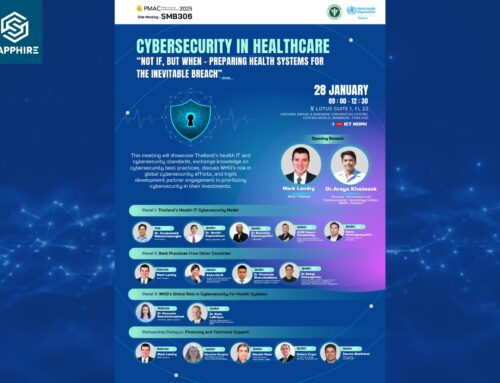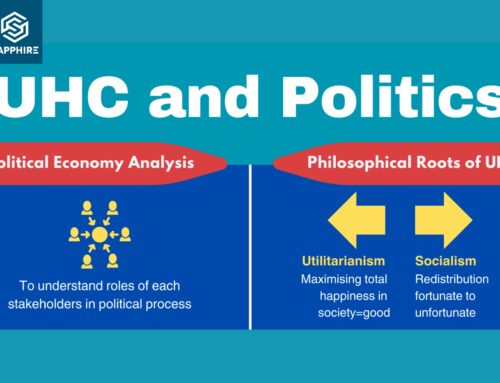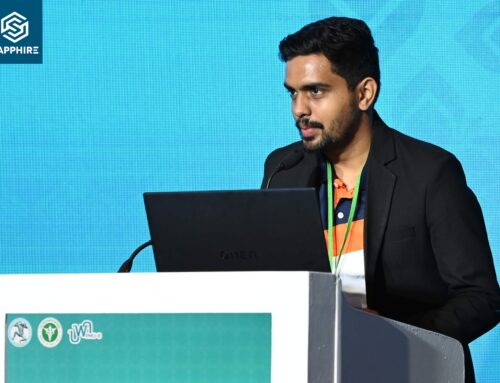Antimicrobial resistance (AMR) is one of the most pressing public health challenges worldwide. It occurs when antimicrobials—such as antibiotics, antifungals, antivirals, and antiparasitics—become ineffective against microorganisms like bacteria, fungi, viruses, and parasites. This resistance can lead to serious infections that are difficult to treat, resulting in increased mortality and healthcare costs (i). In fact, AMR has resulted in the loss of more than 36 million lives since 1990 and is forecasted to lead to 39 million deaths between 2024 and 2050 (ii). AMR poses risks not only to individuals but also impacts the healthcare, veterinary, and agricultural sectors. This necessitates a shift towards a “One Health” approach in systematically addressing AMR (iii).
Understanding AMR strategies in Thailand
Thailand has taken significant steps to address AMR. The Thailand Antimicrobial Resistance Containment and Prevention Program was established in 2011 (iv). Years later, Thailand launched its first national strategic plan on AMR for 2017-2021. The Health Intervention and Technology Assessment Program (HITAP) conducted a mid-term review of the progress in implementing strategies to mitigate the effects of AMR in Thailand as part of the World Health Organization Country Cooperation Strategy (WHO CCS) (v). A mid-term review paper (vi) and policy brief (vii) were published by HITAP in 2020 in Thai. The following year, HITAP released a policy brief and a booklet on AMR policy in Thailand in the English language (viii). This booklet provides insights into Thailand’s strategies for tackling AMR, which can serve as a good blueprint for low- and middle-income countries (LMICs) navigating the challenges of AMR. HITAP highlighted the need for capacity building of human resources, implementing regulations restricting the availability of antibiotics, and conducting public information campaigns to help reduce the burden of AMR. This booklet was, in part, published through the efforts of the Overseas Development Institute (ODI) fellows hosted by HITAP from 2019 to 2021. ODI Fellows are supported by the Fleming Fund to strengthen capacity and workforce in AMR (ix).
Economic evaluations of interventions to address AMR
AMR incurs significant economic costs in addition to death and disability. Using Health Technology Assessment (HTA) to understand the value-for-money of interventions such as diagnostics and vaccines to inform decisions on tackling AMR was found to be an area that had not been adequately explored. HITAP published a protocol, and subsequently the findings, of a systematic literature review on economic evaluations of interventions targeting AMR (x, xi). It is the first review since 2002 that considers a broad set of interventions and the first to include non-human health interventions. The review highlighted that most economic evaluation (EE) studies were focused on high-income settings and are CEA but not CUA studies and did not use quality-adjusted life years (QALYs) or disability-adjusted life years (DALYs), which are preferred for use in policy. Moreover, the review emphasized the need to replicate these EE studies in LMICs, which calls for increased collection of relevant data.
Considering HITAP’s expertise in HTA in Southeast Asia, HITAP, along with collaborators from the National University of Singapore (NUS), initiated a three-year project to assess the socioeconomic impact of AMR through a One Health lens (xii). Supported by the One Health Antimicrobial Resistance Research Programme in Singapore, this project aimed to create a comprehensive review of approaches to estimating the socioeconomic impacts of AMR and to adapt existing modeling frameworks accordingly. There are two reviews included in this project: the first review, led by the NUS and Duke-NUS team, focused on earlier studies estimating the socioeconomic impact of AMR. The other review, led by HITAP, aimed to assess the data sources used to estimate the economic impact of those studies. The project will culminate in an assessment of interventions that can mitigate the socioeconomic impact of AMR across various levels, including agency, inter-agency, and national stages.
Global initiatives
To contribute to a global AMR initiative and broaden its network beyond Asia, Dr. Yot Teerawattananon from HITAP served as a working group member of the Center for Global Development (CGD), which then released a report titled, “A New Grand Bargain to Improve the Antimicrobial Market for Human Health”. This report outlined the findings of working group members across the globe who examined policy options for improving antimicrobial innovation, access, and stewardship in LMICs (xiii). Furthermore, Ms. Annapoorna Prakash of HITAP served as a member of the Global Future Council (GFC) on the Future of Tackling AMR—an endeavor of the World Economic Forum (WEF). As a member of the council, Ms. Prakash attended a workshop session in Oct 2023 and the WEF-GFC annual meeting in Nov 2023 in Dubai, UAE, which aimed to outline the top challenges and solution areas for global leaders to prioritize over the next three years. Additionally, HITAP collaborated on the Global Citizens’ Juries on AMR 2024, an initiative of the Center for New Democratic Processes (CNDP). The juries from Thailand, Malawi, and the United States learned about AMR as a public health challenge, deliberated with one another regarding interventions, and made recommendations about how to address it at the local, national, and global levels (xiv).
Looking ahead, HITAP will be collaborating with its international partners for the Global Antibiotic Policy Initiative (GAPi) project. This project aims to develop a model to inform optimal antibiotic prescribing targets and the cost-effectiveness of AMR interventions. HITAP will also be involved with a project under the Global Antibiotic Research and Development Partnership (GARDP), aiming to evaluate the public health value and cost-effectiveness of reserve antibiotics. Recently, HITAP also co-organised a webinar on pooled procurement and, in this knowledge sharing session, learned from the SECURE project that focuses on making antibiotics more accessible (xv). Drawing from its experience in HTA, HITAP is expanding its work on AMR not only in Thailand but also on a global scale, collaborating with international partners to develop impactful solutions for this critical public health issue.
Acknowledgements:
This article was written by Dr. Shiela Marie Selisana and was reviewed by Manit Sittimart, Saudamini Dabak, and Chittawan Poonsiri.



